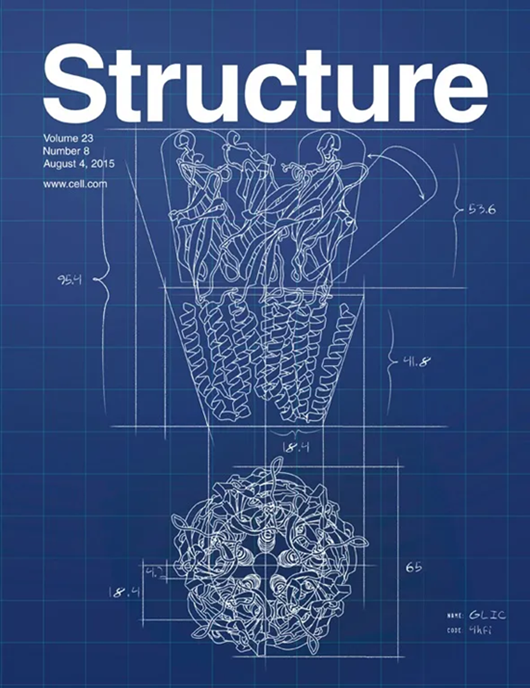酵母Hir组蛋白伴侣复合物中Hir2和Hpc2相互作用的结构见解
IF 4.3
2区 生物学
Q2 BIOCHEMISTRY & MOLECULAR BIOLOGY
引用次数: 0
摘要
HIRA复合体由HIRA、UBN1和CABIN1组成,通过将H3.3组蛋白变体沉积到核小体中,在组蛋白伴侣活性和染色质调节中发挥核心作用。适当的亚基相互作用对复杂的稳定性和功能至关重要。在这项研究中,我们使用生化和结构方法研究了Hir2和Hpc2之间的相互作用,Hpc2是HIRA和UBN1的酵母同源物。我们发现Hpc2的Hpc2相关结构域(NHRD)的n端与Hir2的WD40结构域结合,与人类HIRA-UBN1相互作用一致。Hir2_WD40-Hpc2_NHRD配合物的晶体结构揭示了Hir2_WD40中7叶片的β-螺旋桨褶皱,Hpc2_NHRD形成了反平行的β片界面。值得注意的是,Hir2_WD40中有一个独特的五链叶片,由脯氨酸残基P228稳定,对Hpc2结合至关重要。突变分析确认了关键的界面残基,为HIRA复合物的进化保护提供了结构上的见解。本文章由计算机程序翻译,如有差异,请以英文原文为准。

Structural insights into the interaction of Hir2 and Hpc2 in the yeast Hir histone chaperone complex
The HIRA complex, composed of HIRA, UBN1, and CABIN1 in humans, plays a central role in histone chaperone activity and chromatin regulation by depositing the H3.3 histone variant into nucleosomes. Proper subunit interactions are critical for complex stability and function. In this study, we examine the interaction between Hir2 and Hpc2, the yeast homologs of HIRA and UBN1, using biochemical and structural approaches. We show that the N-terminal to the Hpc2-related domain (NHRD) of Hpc2 binds to the WD40 domain of Hir2, consistent with the human HIRA-UBN1 interaction. The crystal structure of the Hir2_WD40-Hpc2_NHRD complex reveals a seven-bladed β-propeller fold in Hir2_WD40, with Hpc2_NHRD forming an antiparallel β sheet interface. Notably, a unique five-stranded blade in Hir2_WD40, stabilized by proline residue P228, is essential for Hpc2 binding. Mutational analysis confirms key interface residues, providing structural insights into the evolutionary conservation of the HIRA complex.
求助全文
通过发布文献求助,成功后即可免费获取论文全文。
去求助
来源期刊

Structure
生物-生化与分子生物学
CiteScore
8.90
自引率
1.80%
发文量
155
审稿时长
3-8 weeks
期刊介绍:
Structure aims to publish papers of exceptional interest in the field of structural biology. The journal strives to be essential reading for structural biologists, as well as biologists and biochemists that are interested in macromolecular structure and function. Structure strongly encourages the submission of manuscripts that present structural and molecular insights into biological function and mechanism. Other reports that address fundamental questions in structural biology, such as structure-based examinations of protein evolution, folding, and/or design, will also be considered. We will consider the application of any method, experimental or computational, at high or low resolution, to conduct structural investigations, as long as the method is appropriate for the biological, functional, and mechanistic question(s) being addressed. Likewise, reports describing single-molecule analysis of biological mechanisms are welcome.
In general, the editors encourage submission of experimental structural studies that are enriched by an analysis of structure-activity relationships and will not consider studies that solely report structural information unless the structure or analysis is of exceptional and broad interest. Studies reporting only homology models, de novo models, or molecular dynamics simulations are also discouraged unless the models are informed by or validated by novel experimental data; rationalization of a large body of existing experimental evidence and making testable predictions based on a model or simulation is often not considered sufficient.
 求助内容:
求助内容: 应助结果提醒方式:
应助结果提醒方式:


